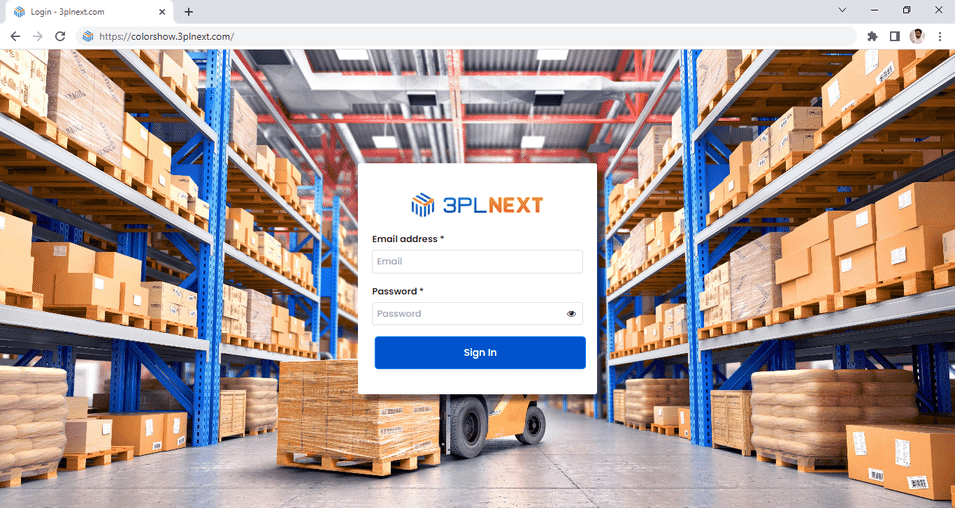Selecting the right 3PL software WMS for your needs can often be intimidating. The challenges include inventory control, order fulfillment, labor management, and more. A Warehouse Management System (WMS) provides the technology and tools to streamline these tasks.
This guide will elaborate on the various aspects of WMS that are most relevant to small businesses, providing an in-depth understanding to make an informed decision.
Contents
What is a 3PL WMS?

A 3PL Software WMS, or third-party logistics warehouse management system, is like a smart helper for companies that store and move lots of stuff. It’s a computer program that keeps track of everything in a warehouse. It knows where items are, how many are there, and where they’re going. It helps companies organize, store, and send products efficiently, making sure they get to the right places at the right times. Think of it as a high-tech organizer for warehouses that helps businesses run smoothly.
What to look for in a WMS?
Choosing the best 3pl software is a critical decision that can significantly impact a company’s operational efficiency and profitability. The best WMS solution for a particular business will depend on its unique needs and challenges. Here are some essential aspects to consider when evaluating WMS options:
1. Functionality and Features
The functionality and features of a Warehouse Management System (WMS) are primary considerations. Look for strong inventory control features that can handle various inventory types and offer real-time visibility. How the system manages order picking, packing, and shipping should align with your specific requirements. Integration with other business systems like ERP, CRM, or e-commerce platforms should be seamless, and the reporting tools should provide the necessary insights for strategic decision-making.
2. Usability and User Experience
When considering usability and user experience, evaluate if the system is intuitive and user-friendly to ensure smooth adoption by your team. Look for a WMS that allows for customization to fit your specific business processes and workflows. Also, consider the system’s accessibility across different devices and various locations, as this flexibility can be a significant advantage in modern warehouse operations.
3. Scalability and Flexibility
The scalability and flexibility of a WMS are crucial for a growing business. The system should align with growth, accommodating increased volume, new products, or expanded market reach. Flexibility is also vital, as the WMS should easily adapt to changes in business processes, market conditions, or regulatory requirements. This adaptability ensures that the system will continue to meet your needs as your business evolves.
4. Technology and Deployment Options
Technology and deployment options require careful consideration. Understanding the differences between cloud and on-premises solutions, considering factors like cost, flexibility, and security, is essential. If mobile access is a priority for your organization, confirm that the WMS provides the necessary support for mobile devices, allowing your team to stay connected and informed no matter where they are.
5. Cost Considerations
Evaluating both initial and ongoing costs is a vital part of selecting a WMS. Consider not only the upfront software costs but also the expenses related to hardware, implementation, and customization. Also, assess the ongoing costs for maintenance, support, updates, and potential future customization. Understanding the full cost structure will help you select a WMS that fits within your budget while still meeting your needs.
Why Choose a Cloud WMS?
Choosing a warehouse management system (WMS) is not just a decision; it’s an investment in the future growth and efficiency of a business. Whether a small enterprise or an expanding retailer, the benefits of implementing a 3pl warehouse management software are numerous, and they all center around optimizing operations and maximizing profit.
1. Efficiency Optimization
By automating many of the manual processes associated with warehouse management, cloud WMS allows for more efficient use of time and resources. Tasks such as picking, put-away, and inventory tracking become more streamlined, resulting in faster response times and more accurate fulfillment.
2. Cost Reduction
Through the precise control of inventory and better space utilization, WMS can substantially reduce holding costs and minimize losses due to overstocking or understocking. Labor costs are also optimized through better task allocation and performance monitoring.
3. Enhanced Customer Satisfaction
With accurate inventory data and efficient order processing, WMS ensures that customers receive their orders promptly and correctly. This boosts customer satisfaction and fosters loyalty which is vital for long-term success.
Challenges of Choosing a WMS
While a Warehouse Management System (WMS) can revolutionize the efficiency of your operations, implementing and managing it isn’t without its challenges. Understanding these potential obstacles is essential in making an informed choice, and in this section, we will explore some of the common challenges you may encounter with a WMS.
1. Implementation Complexity
Implementing a WMS is a complex process that requires careful planning, configuration, and training. Mistakes in any of these areas can lead to delays, increased costs, and even failure of the system to meet the business’s needs.
2. Integration Issues
If the WMS needs to be integrated with other systems, such as an ERP or e-commerce platform, the process can be challenging. Incompatibility between systems may require custom solutions, increasing both the complexity and cost of implementation.
3. Staff Training and Adoption
Introducing a WMS often represents a significant change in how warehouse staff perform their tasks. Training is essential to ensure smooth adoption, but resistance to change can be a barrier. The learning curve associated with a new system can also lead to temporary decreases in productivity.
Some Examples of WMS for Small Businesses
Selecting the right WMS for your small business is a critical decision. Below are some examples of WMS solutions tailored to different needs:
1. Fishbowl Inventory
This system offers comprehensive inventory tracking and order management capabilities. With seamless QuickBooks integration, it’s an excellent option for businesses looking for robust accounting features. Fishbowl also provides customizable workflows to fit the specific needs of different industries.
2. InFlow Inventory
Known for its user-friendly interface, inFlow Inventory offers robust reporting capabilities that enable businesses to make data-driven decisions. Its flexibility in managing multiple locations and integration with popular e-commerce platforms make it a versatile choice.
3. Zoho Inventory
A part of the Zoho suite, Zoho Inventory offers scalability and integration with other Zoho products. With features like multi-channel selling, automated workflows, and advanced analytics, it’s designed to grow with your business, adapting to your ever-changing needs.
Conclusion
Selecting the perfect Warehouse Management System is a foundational step for any small business seeking growth and efficiency. Understanding the nuances of picking, put-away, dock scheduling, labor management, and the technological options available, such as cloud-based solutions or ERP integration, is crucial.
By considering one of the examples mentioned or researching others that may better suit your needs, you can make a decision that will positively impact your bottom line. This guide serves as a comprehensive resource to equip small business owners with the knowledge needed to thrive in today’s competitive landscape.
Also Read:
- How to Change Twitch Name Color in Chats & More Tips
- Effective Ways To Improve Your SEO With Heatmaps
- Java Print vs Println – What’s The Difference?
- How to Use Discord in Full-Screen Mode(Web & Application)
- Printf vs cout: What is the difference?
